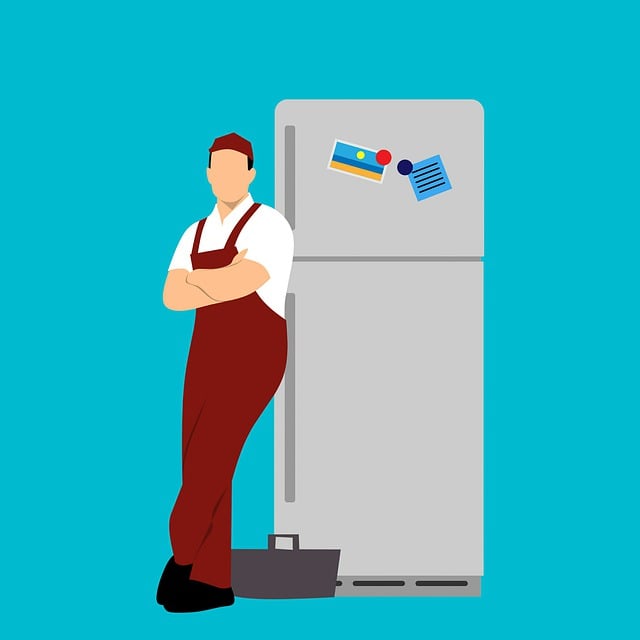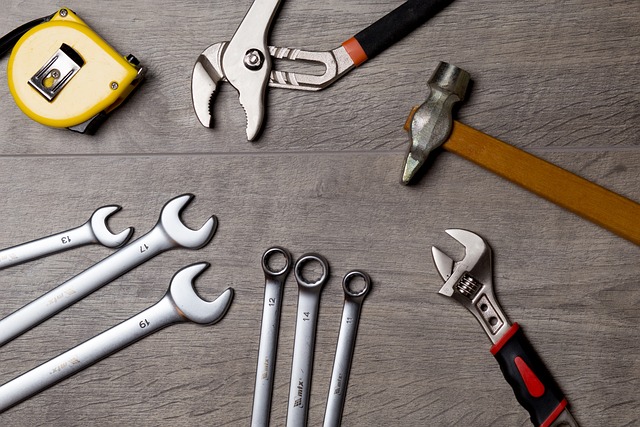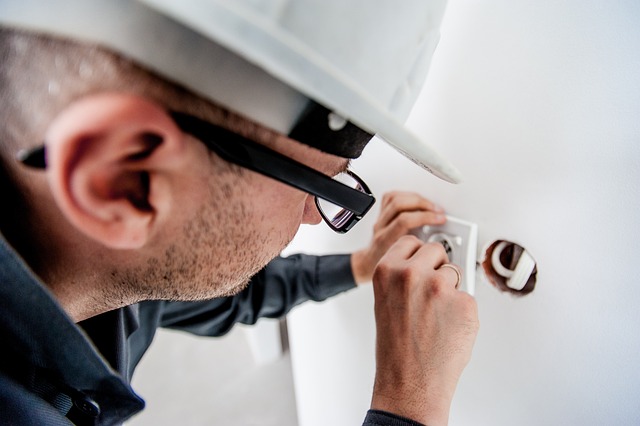Refrigerator ice maker issues can range from producing small ice cubes to complete ice production cessation, with solutions often involving simple cleaning or more complex repairs like replacing parts. To resolve thin ice, clean the ice maker's harvesting mechanism, including the pin and needle assembly. No ice? Check the water supply line and clear any blockages in the water inlet valve. If you hear excessive air or unusual noises from the dispenser, it might be time to fix or replace the actuator assembly. Regular maintenance is key to preventing these problems and ensuring your ice maker operates efficiently for a long time. For those not comfortable with DIY repairs, professional refrigerator repair services are available to effectively address common malfunctions. When installing a new ice maker, carefully follow the manufacturer's instructions, prioritize safety, and ensure proper alignment and connection to avoid leaks or functional issues. Don't forget routine maintenance like cleaning condenser coils, inspecting door seals, organizing your fridge, and replacing the water filter every six months to maintain optimal performance and extend the life of your appliance. This approach ensures you have consistent access to high-quality ice without the need for costly repairs.
Ensuring your home stays stocked with ice is not just a matter of convenience but a modern-day necessity. Whether you’re hosting a summer BBQ or simply enjoying a cold beverage on a hot day, a reliable ice maker is crucial. This article provides comprehensive guidance on repairing and installing ice makers within refrigerators, offering solutions to common issues and maintenance tips to keep your appliance running smoothly for years to come. Dive into our expert advice on ‘Refrigerator Repair’ to transform your home into a haven of chilled refreshments.
- Assessing Common Ice Maker Issues in Refrigerator Repair Scenarios
- Step-by-Step Guide to Troubleshooting and Fixing Ice Maker Problems
- Tips for Safe and Efficient Installation of a New Ice Maker
- Maintenance Best Practices to Extend the Life of Your Ice Maker and Refrigerator
Assessing Common Ice Maker Issues in Refrigerator Repair Scenarios

When encountering common issues with ice makers within refrigerator repair scenarios, homeowners and technicians alike must approach troubleshooting systematically to ensure efficient repair. A frequent problem involves the production of thin or small ice cubes, which can be resolved by inspecting and cleaning the ice maker’s harvesting mechanism, including the pin and needle assembly. This ensures that the ice can release properly from the tray. Another prevalent issue is the absence of ice production, often due to a malfunctioning water supply or a clogged water inlet valve. In such cases, verifying the functionality of the water supply line, checking for blockages, and replacing defective components as necessary are essential steps in refrigerator repair. Additionally, if the ice maker is producing a lot of air or making a loud noise during operation, it may indicate that the dispenser actuator assembly requires attention or replacement. Regular maintenance and timely repairs can prevent these issues from escalating, ensuring that your ice maker operates smoothly and efficiently for years to come. Homeowners who are not comfortable with DIY repairs should consider professional refrigerator repair services to address these common problems effectively.
Step-by-Step Guide to Troubleshooting and Fixing Ice Maker Problems

When your ice maker stops producing the chilly cubes your daily routine relies on, a step-by-step approach to troubleshooting can save you from a hot beverage emergency. Begin by examining the water supply to ensure it’s turned on and there are no kinks or blockages in the line. If the ice maker isn’t filling with water, this is a common issue that can easily be resolved by checking the connection and tightening any loose fittings. Should the problem persist, inspect the water inlet valve for any debris or malfunctions.
Next, check the ice maker’s interior mechanisms. Open the freezer door and pull out the ice maker. Look for frost buildup on the evaporator coils and around the ice mold. Excessive frost can prevent proper functioning, so use a defroster to remove any accumulation. If your ice maker is producing only small pieces or not ejecting them, investigate the ejection mechanism. Ensure that the arm is moving freely and that there’s no obstruction preventing the release of the ice. In some cases, simply cleaning the mold or the ejection mechanism can resolve this issue. For more complex malfunctions like a constantly running cycle or a leak, consulting your refrigerator’s manual for specific diagnostic steps or reaching out to a professional is advisable. Regular maintenance and prompt attention to warning signs can extend the life of your ice maker and ensure it continues to deliver the refreshing ice you need, right when you need it.
Tips for Safe and Efficient Installation of a New Ice Maker

When installing a new ice maker, safety and efficiency are paramount to ensure optimal performance and longevity. Begin by carefully reading the manufacturer’s instructions, as these provide specific guidelines tailored to your model. It’s crucial to disconnect the power source before starting the installation process to prevent any electrical hazards. Once the power is off, proceed with removing the old ice maker if one exists, taking note of its connection points for a seamless replacement.
Position the new ice maker in the designated space on your refrigerator or countertop, ensuring it aligns correctly with the water and power supply outlets. Secure the ice maker to the surface using the provided hardware, tightening firmly but gently to avoid damaging any components. Connect the water line first, making sure the connection is leak-free, and then attach the power cord, adhering to any necessary electrical safety standards. With the installation complete, reconnect the power source, and for models with an in-line filter, replace it as per the manufacturer’s recommendations. Regular maintenance, such as cleaning the ice maker’s exterior and checking for proper water flow and ice production, will help maintain its efficiency and extend its lifespan. If you encounter any issues during installation or afterward, professional refrigerator repair services can provide assistance to address specific concerns efficiently.
Maintenance Best Practices to Extend the Life of Your Ice Maker and Refrigerator

Regular maintenance of your ice maker and refrigerator is pivotal in ensuring their longevity and optimal performance. To extend the life of your appliances, start by cleaning the condenser coils at least twice a year. Dust and debris can accumulate on these coils, impeding efficiency and causing your ice maker to work harder. Use a coil brush or vacuum cleaner with a crevice tool to remove any obstructions gently. Additionally, periodically inspect door seals for wear and tear; compromised seals can lead to warm air infiltration, affecting both the refrigerator’s cooling capabilities and the quality of your ice. Replace any damaged seals promptly to maintain optimal temperatures within the appliance.
Furthermore, keeping your fridge organized contributes significantly to its effectiveness. Regularly discard expired items and ensure that food is stored properly to avoid spills that could damage interior components. When defrosting your freezer, do not use sharp objects that might scratch or puncture surfaces. Employ a defrosting solution or warm water to gently thaw any ice buildup. Regularly checking the water filter and replacing it every six months, as recommended by refrigerator repair professionals, is also crucial for maintaining clean, tasty ice and ensuring your fridge operates at peak performance. By adhering to these maintenance best practices, you can avoid costly refrigerator repairs and savor the convenience of fresh, clear ice whenever you desire it.
Ensuring your refrigerator operates at its best, including maintaining a consistent supply of ice, is a cornerstone of home convenience. The ability to troubleshoot and repair common ice maker issues can save time and resources, as outlined in our guide to assessing and fixing these problems. With the right steps and safety precautions, installing a new ice maker can be achieved with ease, as detailed in our installation tips. Moreover, adhering to maintenance best practices is key to extending the life of both your ice maker and refrigerator, ensuring that you have reliable access to fresh, chilled drinks and ice for all your needs. By familiarizing yourself with these processes through our article on refrigerator repair, you can confidently maintain and manage your home appliances, enhancing your daily comfort and convenience.
